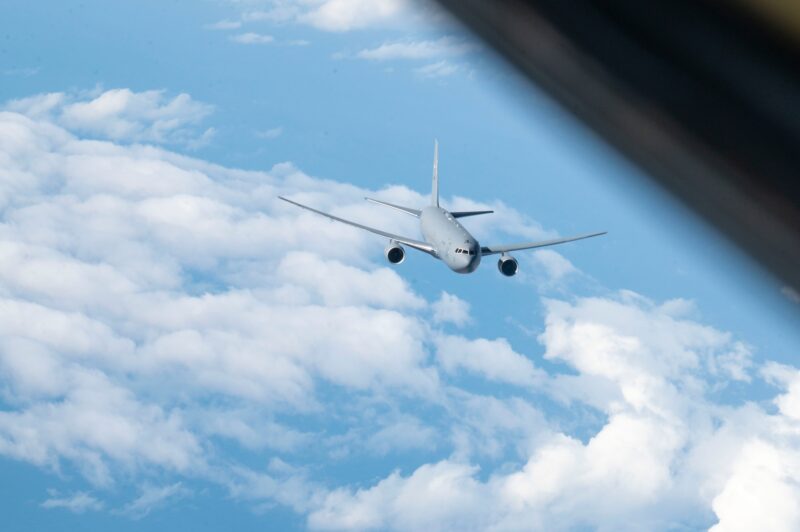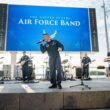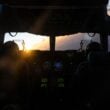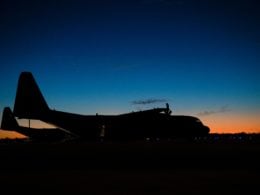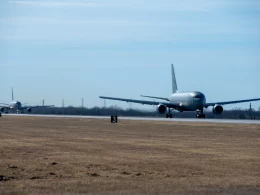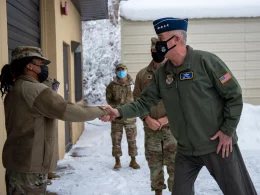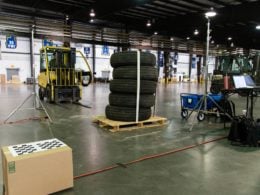JOINT BASE PEARL HARBOR-HICKAM, Hawaii —
In the vast expanse of the Pacific theater, distance, austerity and competition pose challenges to the ability of the United States and its Allies to project airpower. U.S. and coalition forces participating in Mobility Guardian 23 demonstrated how endurance refueling operations could overcome such limits.
“Long endurance sorties conducted during MG23 reinforced the operational relevance of the concept and validated Air Mobility Command’s ability to continue to be a force multiplier, even with the tyranny of distance in the Pacific,” said U.S. Air Force Major Jason Sewell, MG23 deputy director. “Long endurance missions allowed KC-135s and KC-46s to stay on station longer and offload more fuel to receivers than would have otherwise been possible.”
Maximum Endurance Operations for tanker aircraft have emerged as a strategic imperative for the U.S., Allies and partners. These missions, characterized by extended periods of aerial refueling without the need for landing, are crucial in bolstering military capabilities, enhancing interoperations and projecting global power. For MG23, aircraft received the necessary fuel to complete their objectives from aligned forces at Royal Australian Air Force Base Darwin.
“Our area of operations is approximately six hours away, which takes about 60,000 pounds of gas just to get there,” said U.S. Air Force Major Sean King of McConnell’s 349th Air Refueling Squadron and the KC-46 Pegasus Force Element commander at RAAF Base Darwin. “The purpose of MEO is to be able to stay out there longer and further the capabilities of our receivers as well as our international partners.”
Endurance refueling is not a new mission set, but the duration and scope of flights achieved during MG23 are unprecedented. KC-135 Stratotankers conducted multiple flights lasting more than 48 hours. At the same time, the KC-46, the USAF’s newest refueling platform, accomplished its longest operational flight to date with a 35-hour sortie.
Both aircraft utilize advanced capabilities to sustain military operations over vast distances. The Stratotanker has been the backbone of America’s refueling enterprise for nearly 60 years. With updated Real Time Information in the Cockpit system, it can receive, process and use real-time data that significantly increases survivability and mission effectiveness.
The KC-46 is the only refueling platform in the world that can offload fuel through the boom and a centerline drogue without landing to reconfigure, allowing it to offload fuel to most joint and Allied aircraft. Simultaneously, an enhanced refueling operator station and communications equipment give its crew unparalleled situational awareness, particularly vital for regions where the threat environment necessitates continuous presence and rapid response.
Moreover, MG23 facilitated cooperation and strengthened military alliances through these missions. Forces from Australia, Canada, France, Japan, New Zealand, the United Kingdom and the United States integrated to conduct Joint and multinational operations seamlessly, enhancing collective defense capabilities.
“I’ve never been a part of something with such an intense focus on integration and interoperability,” said RAAF Flight Lieutenant Robert Bartholomew-Walsh, 13 Squadron movement officer. “Mobility Guardian has been a great, agile exercise for [the] Air Force to be a part of. Specifically, 13 Squadron has been able to work with a large USAF element here, and that involvement has been quite valuable.”
Whether the U.S. participates or leads, exercising with other nations offers an indispensable experience in the Pacific and worldwide. As all countries dedicated to a rules-based international order navigate a complex security landscape, endurance refueling missions will remain a cornerstone of power projection in the region. Because of MG23’s location, participating nations were able to enhance their readiness while promoting regional stability.
“The greatest advantage of MG23 being held in the Pacific is working hand in hand with our Allies,” said U.S. Air Force Col. Chesley Dycus, 92nd Air Refueling Wing commander. “Working with the government of Australia and the Royal Australian Air Force has allowed us to learn about one another’s capabilities to better understand the Indo-Pacific theater.”




